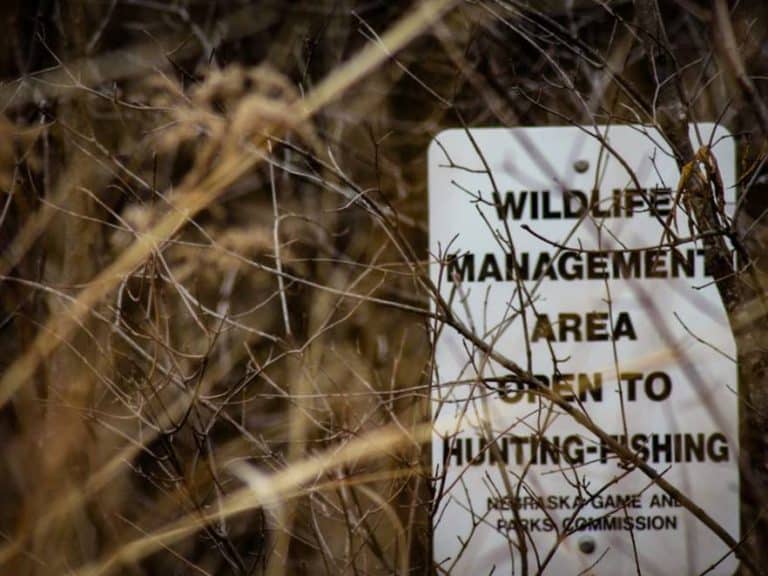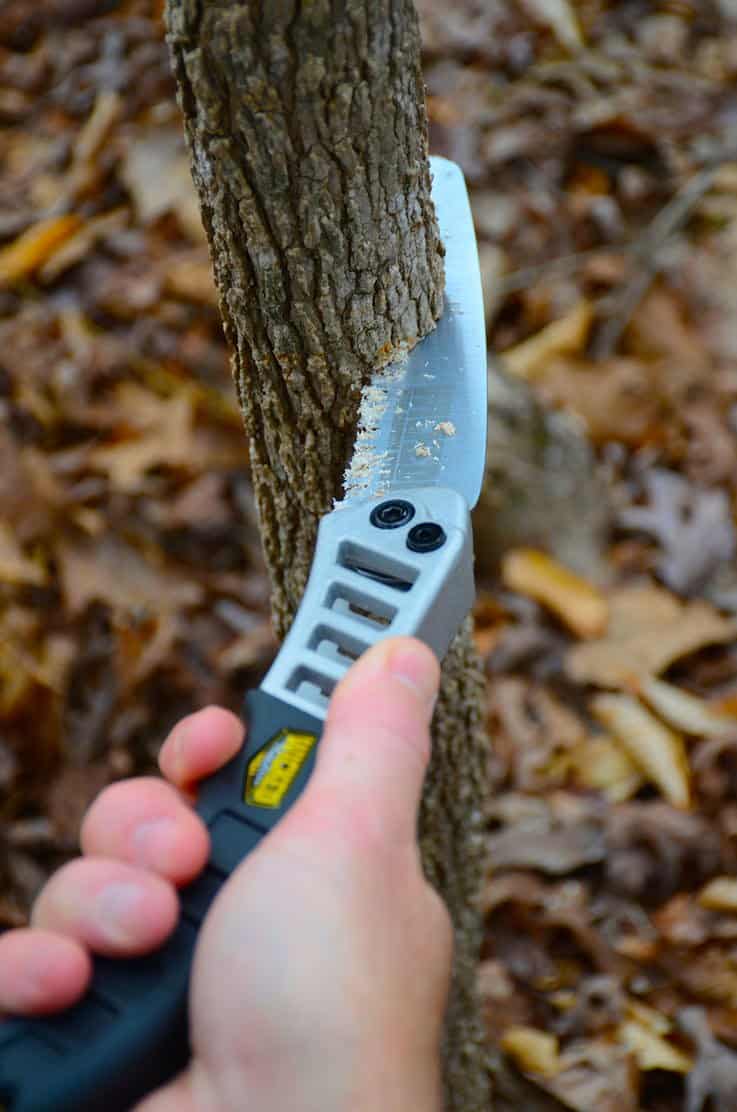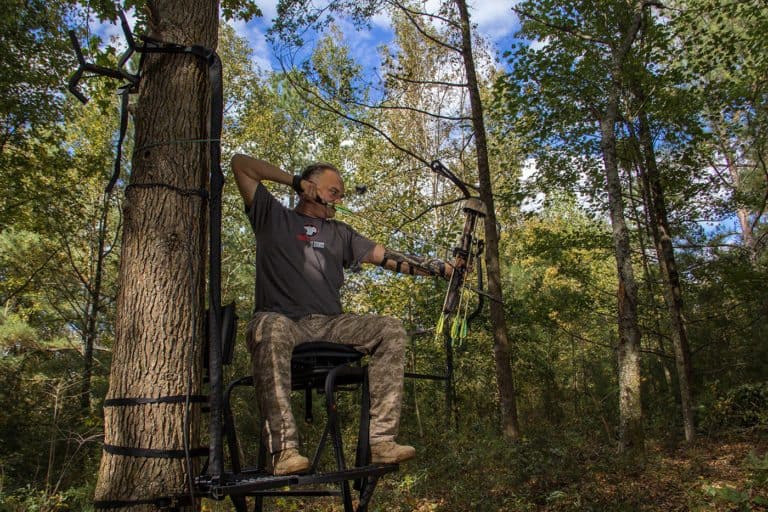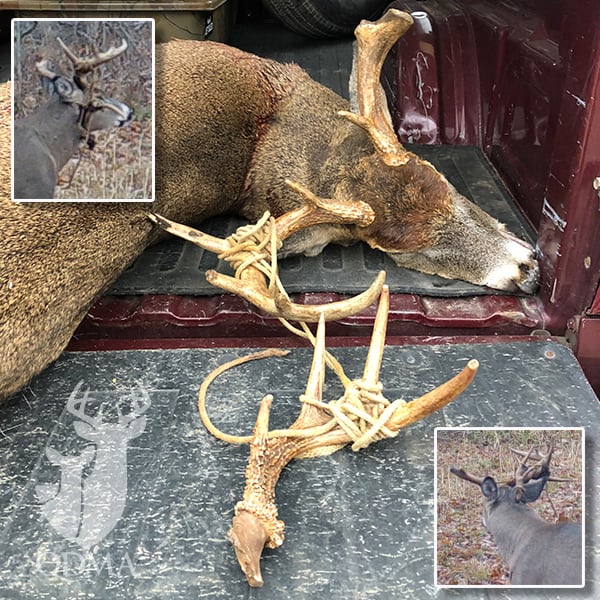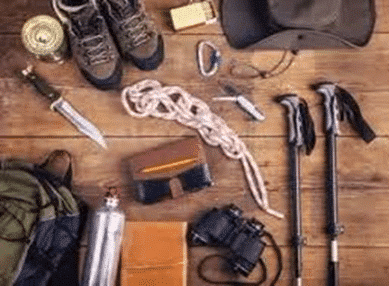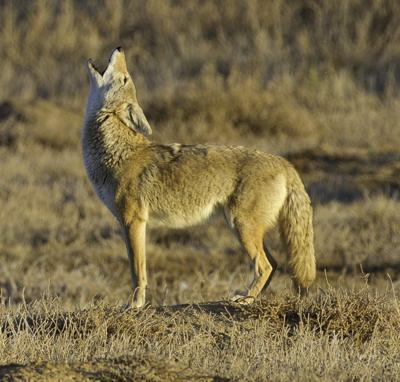No Off Season – Improve The Land
No Off Season – Improve The Land
There are countless ways to improve the land for the deer we love to hunt. Whether that’s by providing additional food sources, additional bedding cover, or adding a water source, everything helps. Do what you can even if it’s on a small scale. It’ll help both the deer and your deer hunting.
The Ultimate Deer Hunting Property
By Lindsay Thomas Jr.
If you could design the ultimate 150-acre piece of hunting property, what would it look like? Where would your food plots go, and what would be planted in them? What about bedding cover and sanctuaries? Maybe an apple orchard? And of course, you’d want some hardwood timber for acorns.
This map is based not only on a hunter’s dreams, but on scientific knowledge of deer movements, behaviors and nutritional needs. No whitetail is going to live full-time on 150 acres without crossing a property line, so the goal is to get mature bucks to use the land as a base of operations, spending more, if not most, of their time on the land, especially when the pressure is on next door.
1: Edge
Whitetails orient to the edges: the transition zones between habitat types. Natural forage and cover are often most abundant along edges. Deer paths often follow edges, and so scrape and rub lines also tend to be found in habitat transition zones. To maximize these benefits and the hunting opportunities found along edges, this design maximizes the amount of habitat edge.
2: Diversity
All species benefit from habitat diversity because they are buffered from shortages in food or cover that are brought about by changing seasons or unpredictable factors such as drought. Habitat diversity plays a key role in attracting deer to this land because, at any time of year, this land is more likely to have resources that are scarce on surrounding lands that are less managed.
3: Huntability
With habitat designed to attract and hold deer, you must now carefully manage your own movements and patterns of hunting pressure to avoid pushing them away again. Whitetails will not use your ultimate habitat if they are constantly encountering you, your scent or your sounds. This is especially true of mature bucks. On this land, the predominant wind direction is an important factor.
4: Hardwoods
Slightly less than half of the property is upland or bottomland hardwoods in three main drainages. Trees in the white and red oak families are found here, providing fall mast for energy and fat storage, but especially attraction for does and thus bucks in fall. The three creek drainages provide major deer travel corridors onto and through the property, serving as the avenues along which deer from other properties will find the attractions. As natural but narrow travel routes, the drainages also offer great stand sites all along their length. They are oriented roughly to the north for a good reason: In the predominant west wind, you can hunt any point along the east side of these drains without scent being carried into, up or down the travel route. On the occasions when winds are reversed, you can hunt the opposite edge.
5: Old-Field Habitat
Bordering every hardwood creek drain is a strip of old-field habitat approximately 1 acre wide (about 70 yards). Old-field habitat is land that is maintained in a very early forest succession stage that includes native grasses, forbs and shrubs. Its essentially a young clear-cut or fallow agricultural field before hardwood or evergreen tree seedlings begin to dominate. It offers awesome cover, and the forbs and shrubs offer forage, browse and even soft-mast production (berries). In short, old fields are all edge. They provide great fawning, bedding and winter cover. There are firebreaks (one harrow-width) on both edges of the old fields separating them from other habitats. These are maintained in perennial clovers to provide property-wide fall and spring nutrition. These green firebreaks allow you to burn this habitat on a regular rotation, every two or three years as needed, to maintain it in early succession cover. You wont burn all of it each year, but you will burn evenly distributed sections totaling one third to one half of the total acreage in old field habitat.
6: Upland Pine/Hardwood
This upland pine/hardwood mix can be thinned on a rotation to maintain forest cover and financial income, but also quality habitat. The sunlight filtering through thinned timber produces great understory cover and forage, and fire can be used here on a rotational basis to maintain the understory in productive early stages. In the end, this setup can produce just as much (or more) forage as an agricultural field while producing income, not draining it.
7: Large Food Plots
The heart of this fantasy food plot program is a pair of large food plots (about 3 to 5 acres each) oriented toward the center of the property and adjacent to major travel corridors in the creek drainages. They are off-limits to hunting because their mission is supplying nutrition, attracting deer to the property and providing summer buck viewing. Because they are large, you can use a decent-sized tractor and specialized equipment such as a no-till grain drill to produce high-quality crops with the greatest efficiency. Warm-season legumes, such as soybeans, can be difficult to grow successfully in small plots because they might be overbrowsed in early growth stages, so these fields are ideal for growing summer forage. Plant half of each field in soybeans and half in corn, every year. The soybeans provide summer forage while the corn is left standing for cool-season attraction and winter nutrition.
8: Small Food Plots
Located around the property in strategic sites are small food plots (1/4 to 1/2 acre) intended for bowhunting. For example, off the corners of the large nutrition plots are foyer plots. They are small plots leading into the large, open plots. Notice they are positioned between the large plots and sanctuary cover. This sets up funnel points for mature bucks leaving their sanctuary cover and heading to the large plots to eat or to look for does. They will tend to use the foyers as staging areas before entering the large, open plots after dark. This creates great stand sites, either between the foyer and the large plot, or between the sanctuary and the foyer. These small plots are planted in easy-to-grow and attractive annual crops such as cereal grains (oats, wheat, rye, triticale) or brassicas such as rape, kale and turnips for late-season hunting. You can plant and maintain these small plots with ATV attachments.
9: Hub-and-Spoke Plots
There are two hub and spoke features in the layout (they look like turkey tracks). Each leg is a narrow strip plot planted in an attractive fall annual such as cereal grains or brassicas, or a mix of both. The arms run through good security cover (old field or the understory of thinned timber), so deer use of these narrow plots in the fall can be heavy. A stand site is at the hub of the spokes. These are designed for gun season, and especially for doe harvest, although they can be a great place to be when the rut is on and bucks are roaming the old fields and uplands looking for does. Notice that on both features, the spokes touch habitat transition lines, and also that both can be hunted in a wide range of likely wind directions without scent being blown down the spokes or into cover where deer are bedded.
10: Orchards
Several 1-acre orchards are dedicated to fruit trees. Each is dedicated to a single tree species, such as crabapples, persimmons, pears, plums or an improved variety of apple. When there are dozens of a single species like this at one site, and fruit is falling, you have a major attraction point that presents great hunting opportunities. By diversifying the species, you also spread the attraction across time: Each species is likely to be in peak fruit drop at a different time in the fall. This allows you to rotate hunting pressure, never spending too much time in a single location. Also, because fruit trees are planted in dedicated orchards, maintenance activities are concentrated at one location, increasing your efficiency at habitat improvement. You can also protect your fruit trees from prescribed fire with firebreaks around the orchards. Notice that most of the orchards are positioned along natural travel corridors and habitat transition lines.
11: Sanctuaries
Sanctuaries are areas you never enter, except in late winter to conduct maintenance activities or hunt for shed antlers. Located in the hardwood drainages on high ground between creek channels, these sanctuaries are thickened along their edges and in interior spots with hinge cuts. Using a chainsaw, select low-value tree species less than a foot in diameter and cut through three-fourths of the trunk at about waist height, allowing the tree to fall over on a hinge that remains connected to the trunk. The horizontal tree survives, creating ground-level structure that screens the interior of the sanctuary and serves as bedding cover. Of course, the purpose of these areas is to provide safe cover for bucks of all ages that are feeling pressure on surrounding lands. Because you never bump them out of these areas if you can help it, they will use these sites as centers of operation. However, the sanctuaries are positioned to set up predictable patterns of travel when the bucks leave looking for food or romance. This allows you to hunt bucks that use the property without bumping them off. Notice the sanctuaries are largely oriented in the south and west of the 150 acres. This keeps most hunting and habitat activities on the downwind side of these areas at all times of the year. In fact, dont plan to ever walk or travel along the western boundary of the land, except to maintain and post the property line, because the predominant west wind will blow your scent into the property interior.
12: Road Network
The road network is designed to accomplish two goals. First, it allows you to reach almost all food plots, orchards, and old fields with trucks, tractors and the equipment necessary to establish and maintain these projects and to conduct prescribed burns. Second, the road network gives good approaches to all areas from the south, east and north. With winds primarily out of westerly points, you can drive, park and walk to almost any stand site without your scent penetrating the area youre going to hunt or other sensitive areas such as sanctuaries and travel corridors.
13: Stand Sites
There are too many potential stand locations to label and thats the way you want it! On a small hunting property, it is important to have plenty of stand options to help manage pressure. If you have few choices, and you hunt a good stand in the wrong wind, you are ruining that site, and your scent is alerting deer in nearby sanctuaries, cover and food plots. If you hunt the same stands repeatedly because you only have a handful of choices, your success and sightings will diminish with each visit.
No matter what the wind direction on this property, you have a setup you can hunt that involves a travel corridor or bottleneck leading to an attraction site such as a food plot, orchard or even one of two man-made water holes. Most of the potential setup sites also involve a sanctuary.
The keys to patterning individual bucks in this network of great stand sites are your trail-cameras. Youll need to place these in travel corridors, food plots, bottlenecks and scrape sites to detect the habits of individual bucks. Remember to monitor the wind and control your scent and disturbance when placing and checking cameras, just as if you are hunting.
14 – Watering Holes
This property offers plenty of water in the creek drainages, but deer often make more use of still water than moving water perhaps because of noise associated with flowing water. A couple of small watering holes, paired with nearby features such as food plots and orchards, create even more predictable travel routes and potential stand locations.



